Contents
- Crop Cultivation
- Agricultural Communities
- Farming Communities
- Present-day Farmers of Jalgaon
- Festivals/Rituals Related to Farming
- Lagvadi chi Puja
- Types of Farming
- Banana Planting
- Problems Faced by Banana Cultivators
- Traditional Agricultural Practices
- Use of Technology
- Polyhouses
- Drip irrigation
- Infrastructure Developments
- Market Structure: APMCs
- List of APMC markets(as of September 2024)
- Farmers Issues
- Public awareness of government schemes
- Graphs
- Land Use and Credit
- A. Agricultural Lending
- B. Agricultural Credit as a share of Total Credit
- References
JALGAON
Agriculture
Last updated on 6 November 2025. Help us improve the information on this page by clicking on suggest edits or writing to us.
Jalgaon district, located entirely on the Deccan Plateau, is widely known for its extensive banana cultivation. The region is characterised by shallow, medium-deep, and deep black soils, which support diverse cropping patterns. The population is predominantly rural and relies heavily on agriculture for livelihoods.
Several major rivers flow through Jalgaon, providing important water resources for farming. These include the Tapi, Girna, Purna, Aner, Bhuleshwari, Biswa, Chandrabhaga, Dolar, Gadgi, Kapara, Katpurna, Man, Morana, Nalganga, Nand, Pedhi, Sipana, and Wan Rivers, among others.
Crop Cultivation
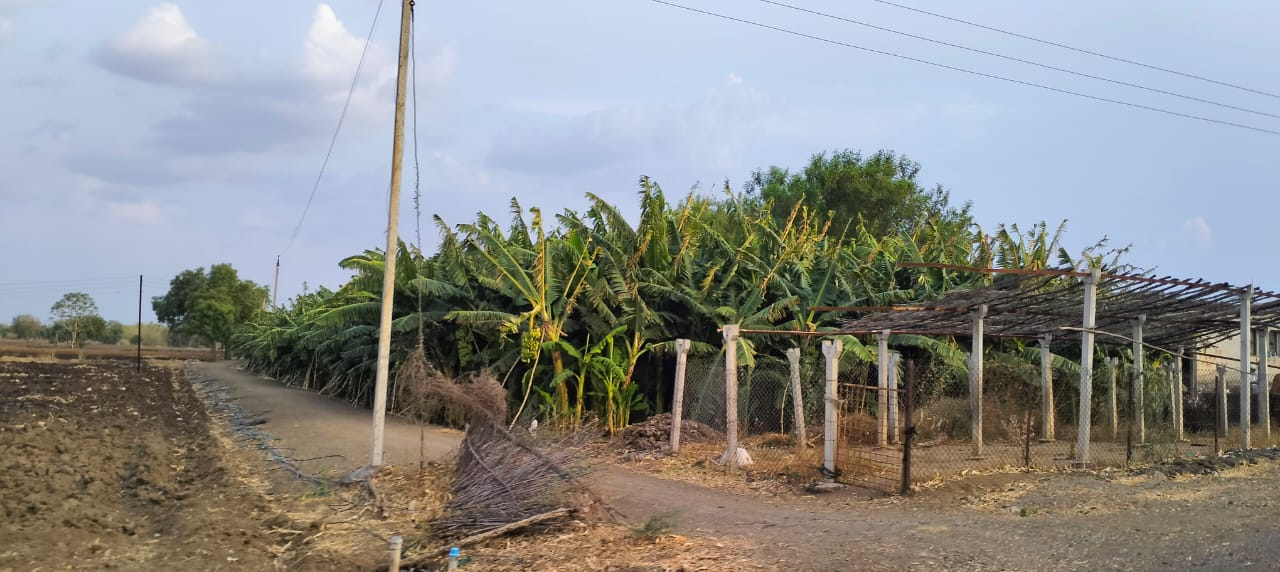
Jalgaon spans 11,765 square kilometres, with 8,777 square kilometres of cultivable land. A significant portion is dedicated to cotton farming, as the district’s black soil and climate are ideal for its cultivation, making it a key cash crop that provides farmers with substantial income. Bananas are another major cash crop, while horticultural crops like Mosambi (sweet lime) and lemons are also widely grown. For food, farmers cultivate maize, jowar, and wheat, with the latter also sold in the market. Pulses, soybeans, and groundnuts are common too, thriving due to their high demand and contribution to the local economy. Crops such as Jalgaon Bharit Brinjal and Jalgaon Banana have received GI Tags as well.
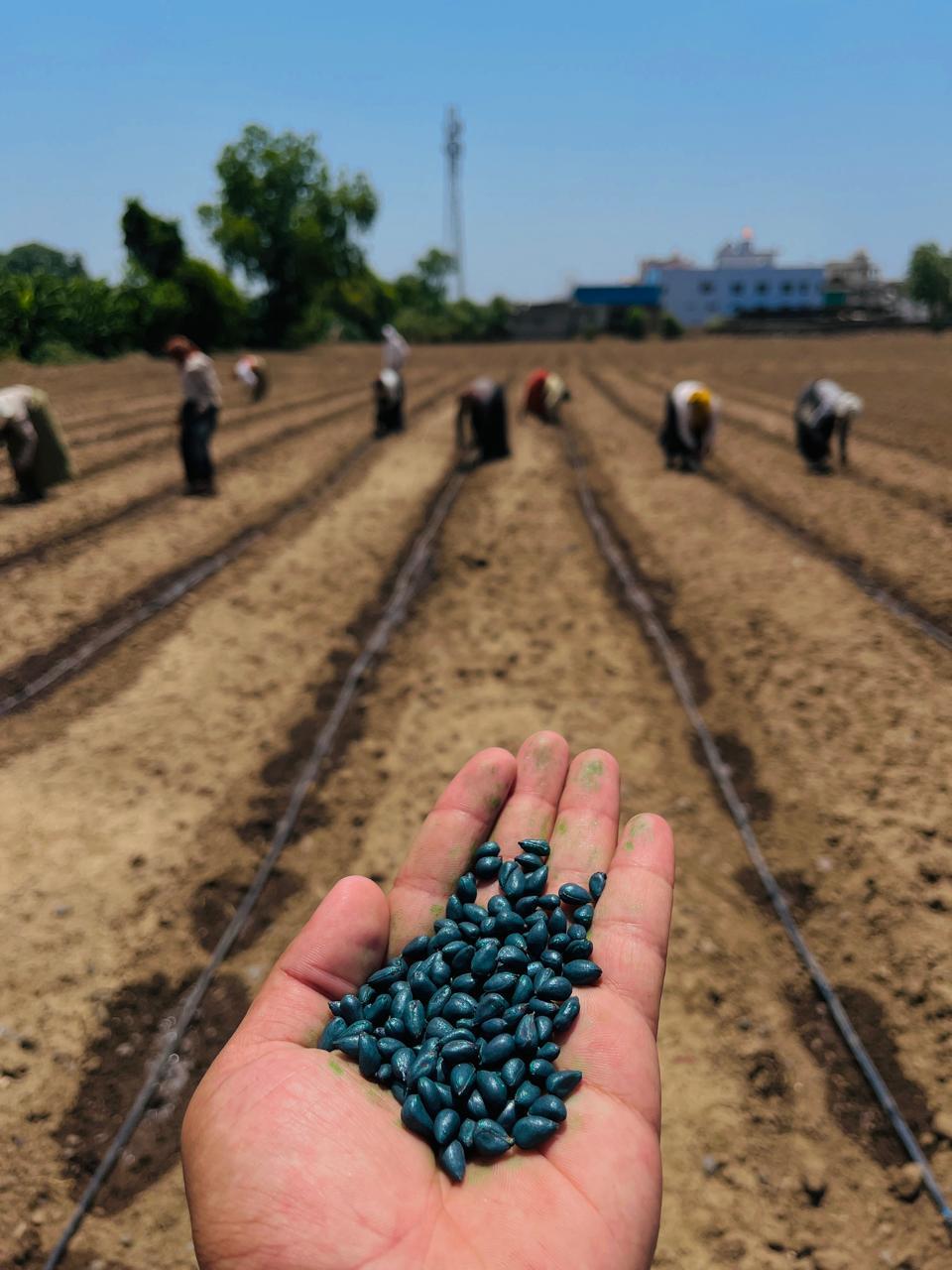
Agricultural Communities
Farming Communities
Farming is mostly associated with local agrarian communities, who often rely on a blend of traditional and modern practices, balancing farming with other entrepreneurial ventures to sustain their livelihoods. Specific communities are traditionally associated with particular crops. For instance, the Leva Patil community is known for primarily cultivating brinjal, while the Mali community focuses on growing a variety of vegetables. In towns like Chalisgaon and Bhadgaon, Limbu (lemon) cultivation is quite common, reflecting the region’s agricultural diversity and the specialisation of these communities.
Present-day Farmers of Jalgaon
In the Jalgaon district, locals say that farming is no longer the sole source of income for many farmers. They often diversify their work, holding jobs in multiple sectors. Some have sold their land to builders, transforming it into small housing societies, renting out flats or units, primarily in cities. Others have ventured into construction, employing migrant labourers and utilising equipment like JCBs and trucks for their businesses. These ventures have made some farmers quite wealthy, shifting their role from traditional farming to that of entrepreneurs, investors, and contractors.
Regarding the use of natural resources, community land, often called grazing land, locally known as Charnachi Jaga, is utilised by farmers who still rear cattle. In the summer and winter, these cattle graze freely on community land, which is considered a shared resource by the locals.
Farmers in Jalgaon also produce a variety of goods from crops like bananas, with raw bananas being used to make banana flour, chips, and bibda (a traditional product). This shows how agricultural practices continue to adapt to new market demands while also preserving traditional uses of natural resources.
Festivals/Rituals Related to Farming
Agriculture is closely linked to local cultural practices. Festivals such as Bail Pola and Naag Panchami are widely celebrated, honouring cattle and the relationship between farmers and the land. Alongside these traditional observances, Krushi Mohatsavs organised by private firms and NGOs promote modern agricultural techniques and awareness, highlighting the continued role of agriculture in Jalgaon’s rural economy and cultural life.
Lagvadi chi Puja
‘Lagvadi chi puja’ also known as Shubhkarya, is performed specifically for banana and turmeric crops to promote their healthy growth and for the crop harvest to be successful. Some farmers conduct the puja during the sowing of the turmeric roots, while others perform it after it has grown into small saplings.
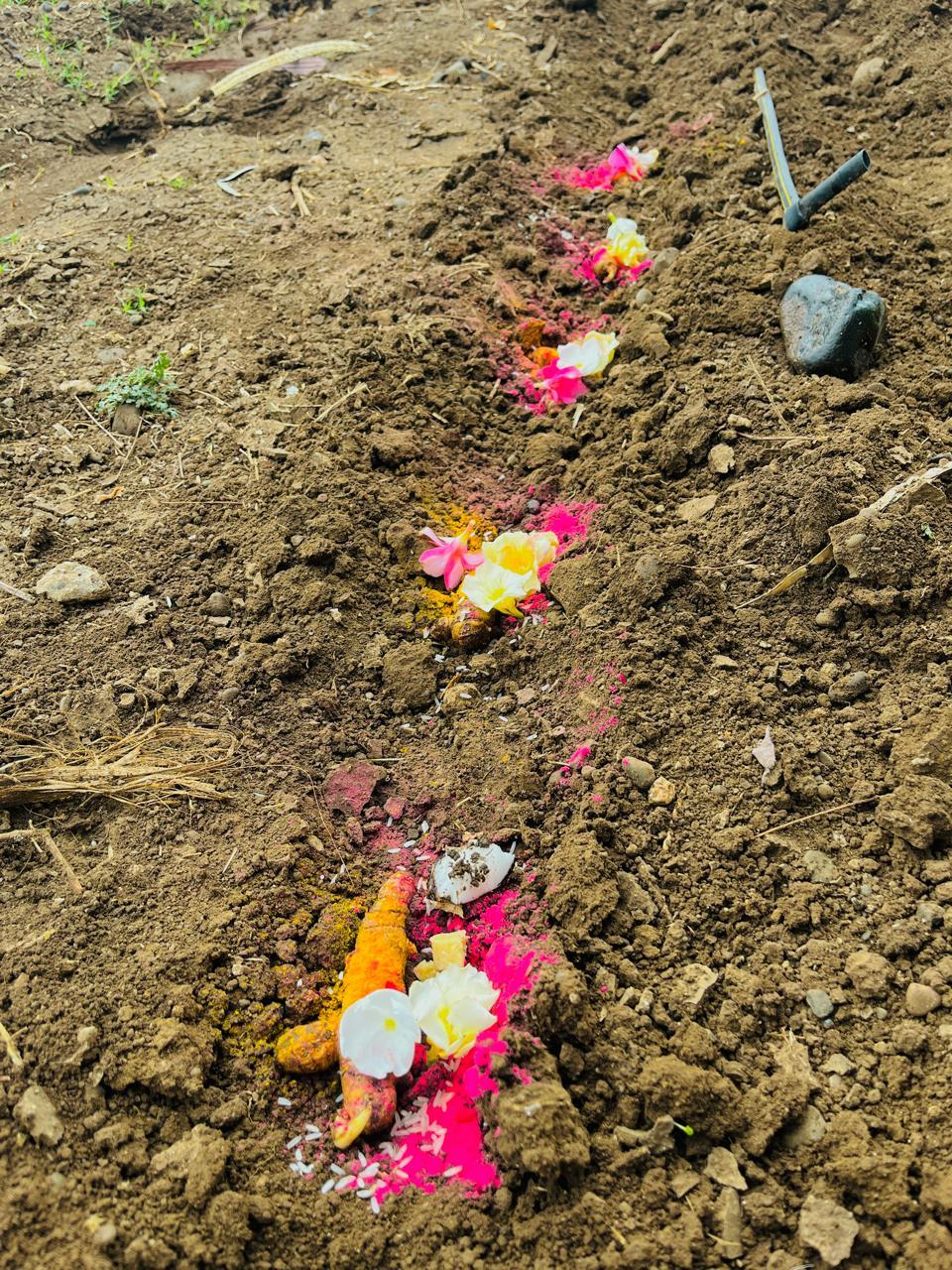

Types of Farming
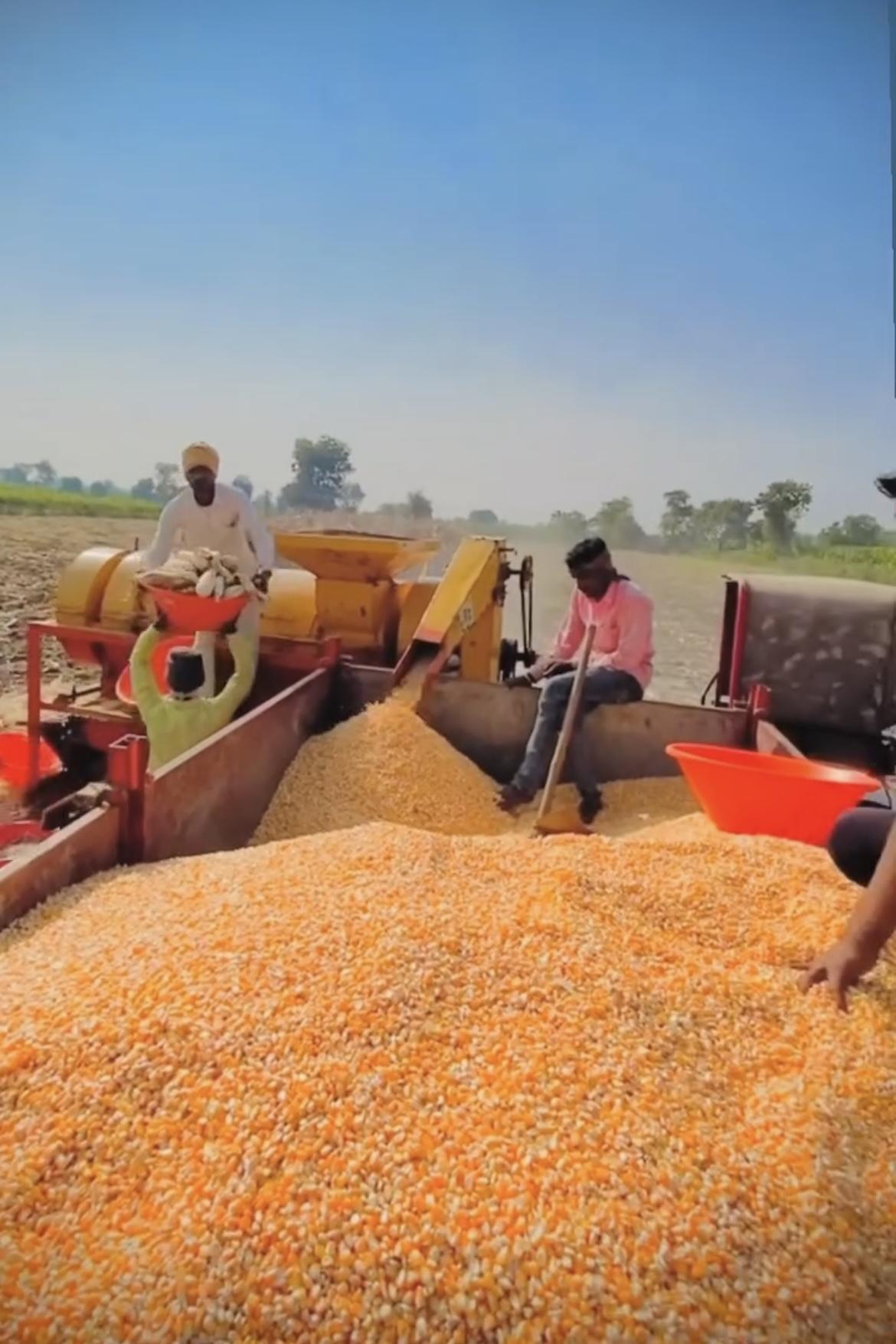
Agricultural practices in Jalgaon largely depend on the crop type, soil, and rainfall patterns. Farmers start by ploughing or digging the land to prepare it for planting. Black cotton soil, a common type in the district, is typically ploughed every four to five years to maintain its moisture and structure, while lighter soils are ploughed annually. After ploughing, the soil is exposed to sunlight and then harrowed to break down clods, level the land, and prepare for sowing.
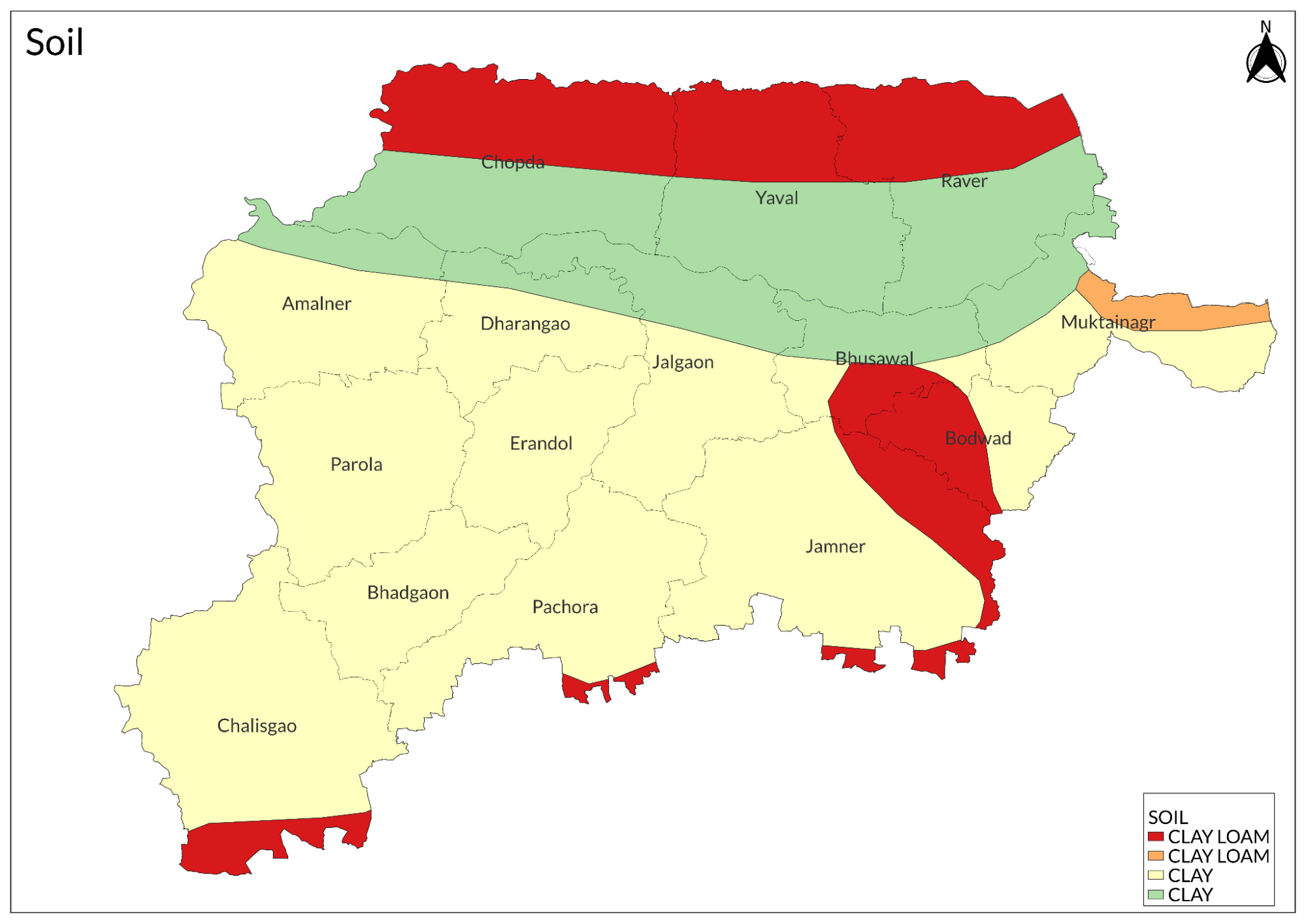
Farmers apply farmyard manure before the monsoon, spreading it evenly across fields. Sowing usually begins with the first rains, using either the broadcasting method or a seed drill. Crops like groundnut are sown by dibbling, while crops such as sugarcane and banana require multiple ploughings to prepare the soil. Farmers also use interculturing to till the soil between plants, remove weeds, aerate the soil, and conserve moisture.
Weeding is typically done by hand, with several rounds necessary for most crops. For certain crops like sugarcane and bananas, earthing-up is practised, where the soil is heaped around the base of the plants for added support. Irrigation is a key aspect of farming in Jalgaon, with most fields relying on well water. The frequency of irrigation varies by crop, with bananas needing frequent watering.
Top-dressing, or the application of quick-acting fertilisers, is carried out during crop growth, typically in multiple doses. Crop protection is another vital task, where farmers use insecticides and traditional methods like slingshots to ward off pests and animals.
Harvesting times vary across crops; jowar and bajri are harvested in the winter, while Bananas are harvested about 13 months after planting. Farmers cut crops like jowar and wheat by hand, while root crops like potatoes are dug out with spades. Once harvested, grain crops are threshed by trampling, separating the grain from the chaff. Finally, the harvested produce is prepared for market, transported, or stored for future use. Grains are often stored in underground pits or bamboo bins, with preventive measures taken to keep away insects.
Overall, the agricultural cycle in Jalgaon reflects a balance of traditional methods and modern innovations, showcasing the hard work and resourcefulness of the farmers who sustain their livelihoods through the land.
Banana Planting
The Banana plantation starts with the planting of the Banana sapling. Farmers start with healthy suckers or tissue-cultured plant material, which are planted in sandy loam soil that drains well. Bananas need full sunlight and occasional watering. They are planted with the rhizome being 2-3 inches deep, with a space of 10-12 feet apart to allow enough room for growth. The sapling is allowed to grow with the help of constant watering and fertilisers.
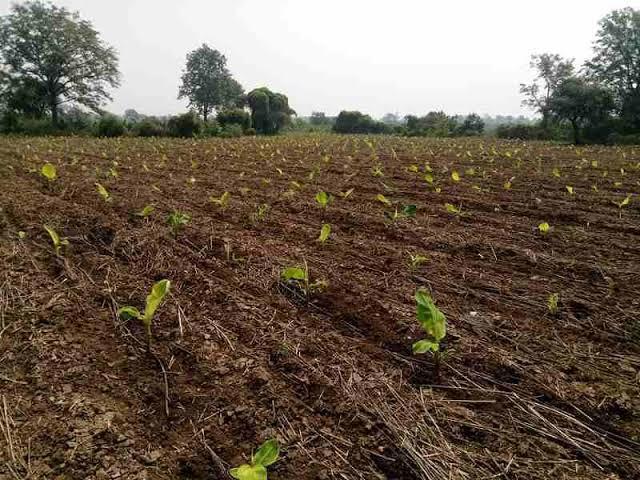
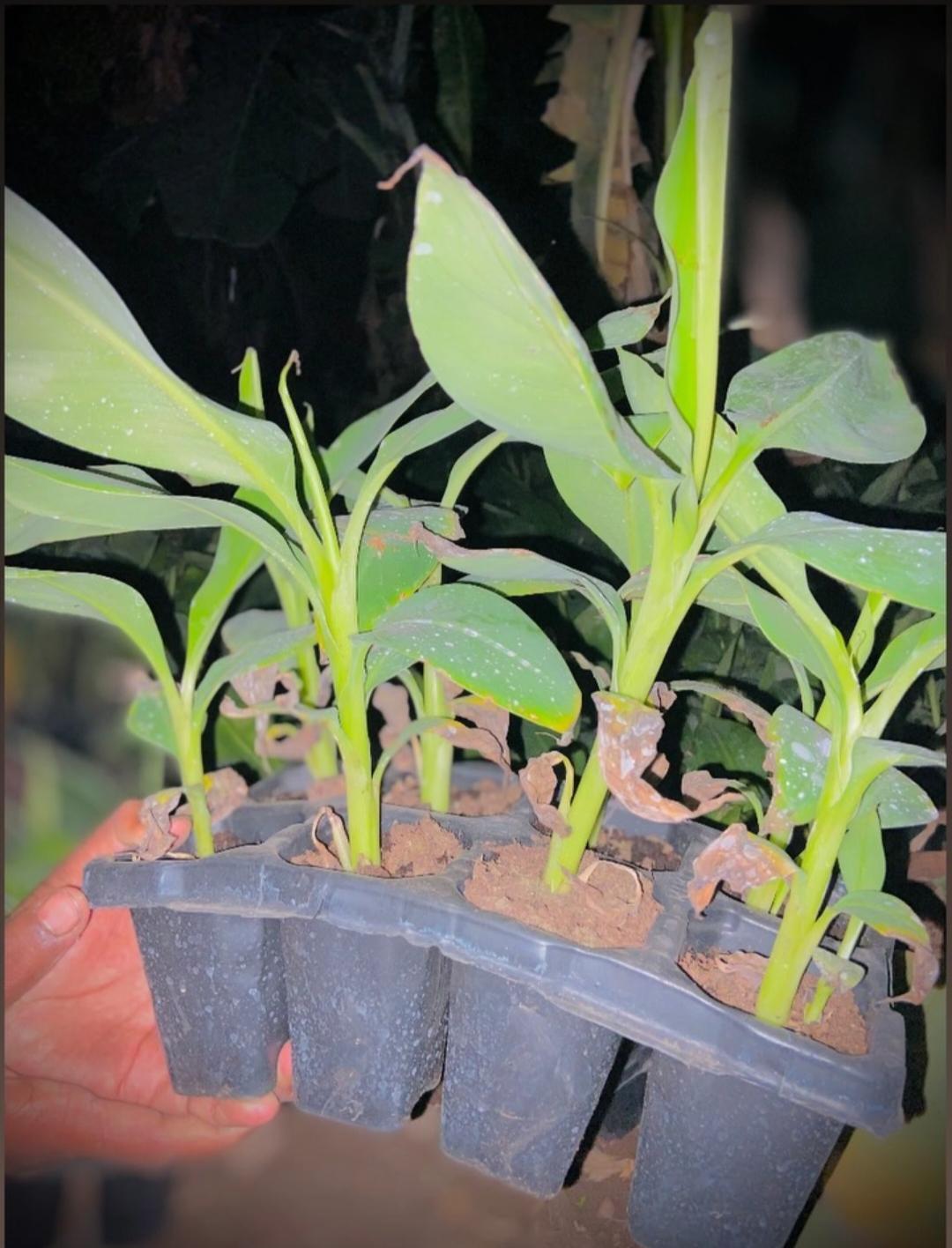
After the plant has grown to a respectable height, a large purple bud appears, followed by small bananas emerging from the flowers. The flower stalk is protected from strong winds by the farmers as it is vital. The Bananas grow and mature on the plant. The fruit is ready to harvest when the skin turns yellow and softens slightly. A gentle tug on the fruit helps determine ripeness.
During the harvesting of the fruit, a clean and sharp knife or pruner is used to cut the Banana bunch from the stem, leaving a small portion attached to the plant. Bananas are to be carefully handled to avoid bruising and then are stored in a cool, dry place. Once the fruit is harvested, the plant is cut back to ground level or about 6 inches of the stem. Any flower stalks or fruit are also removed, and the plant is allowed to regrow and produce new shoots.
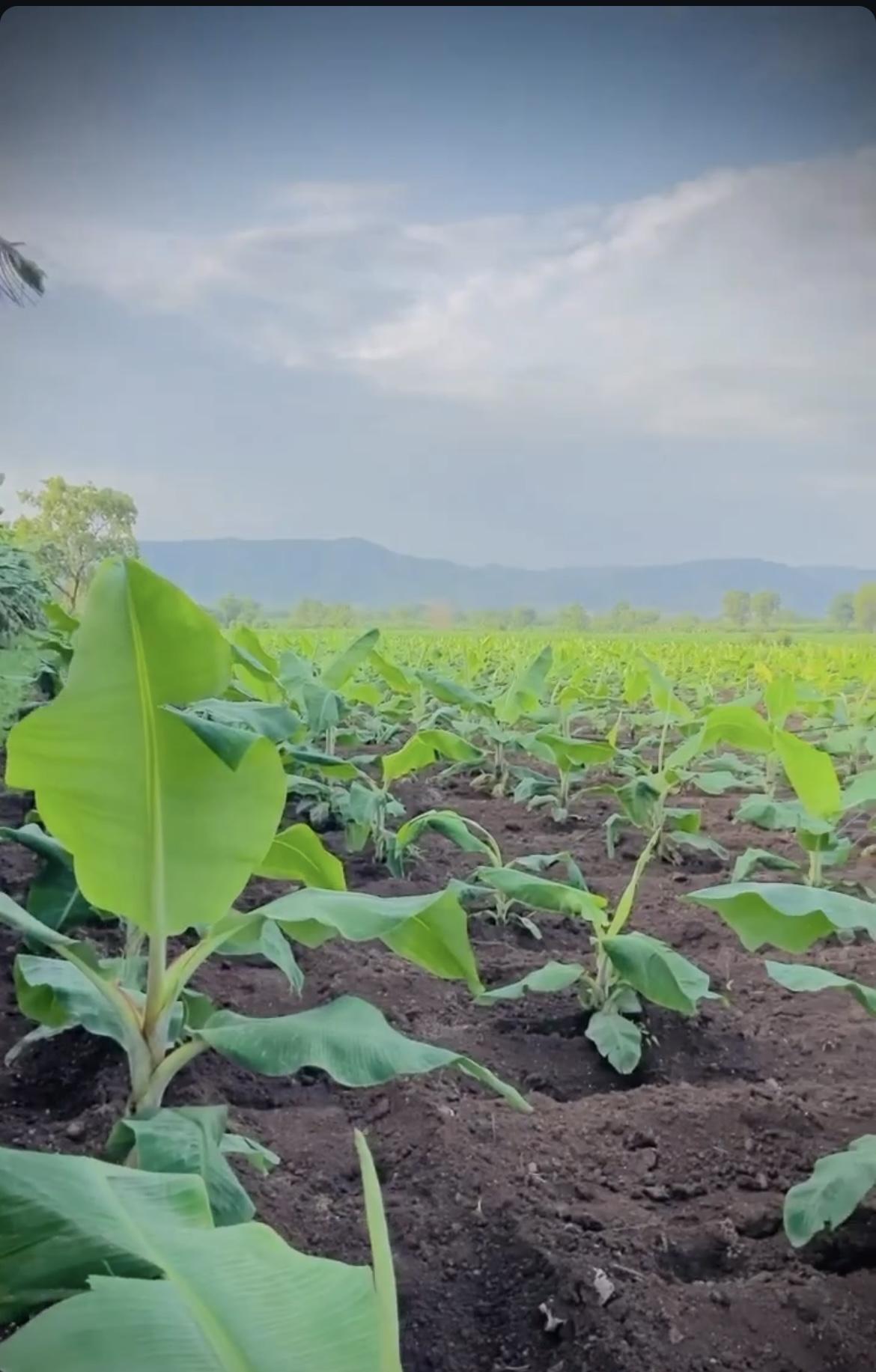
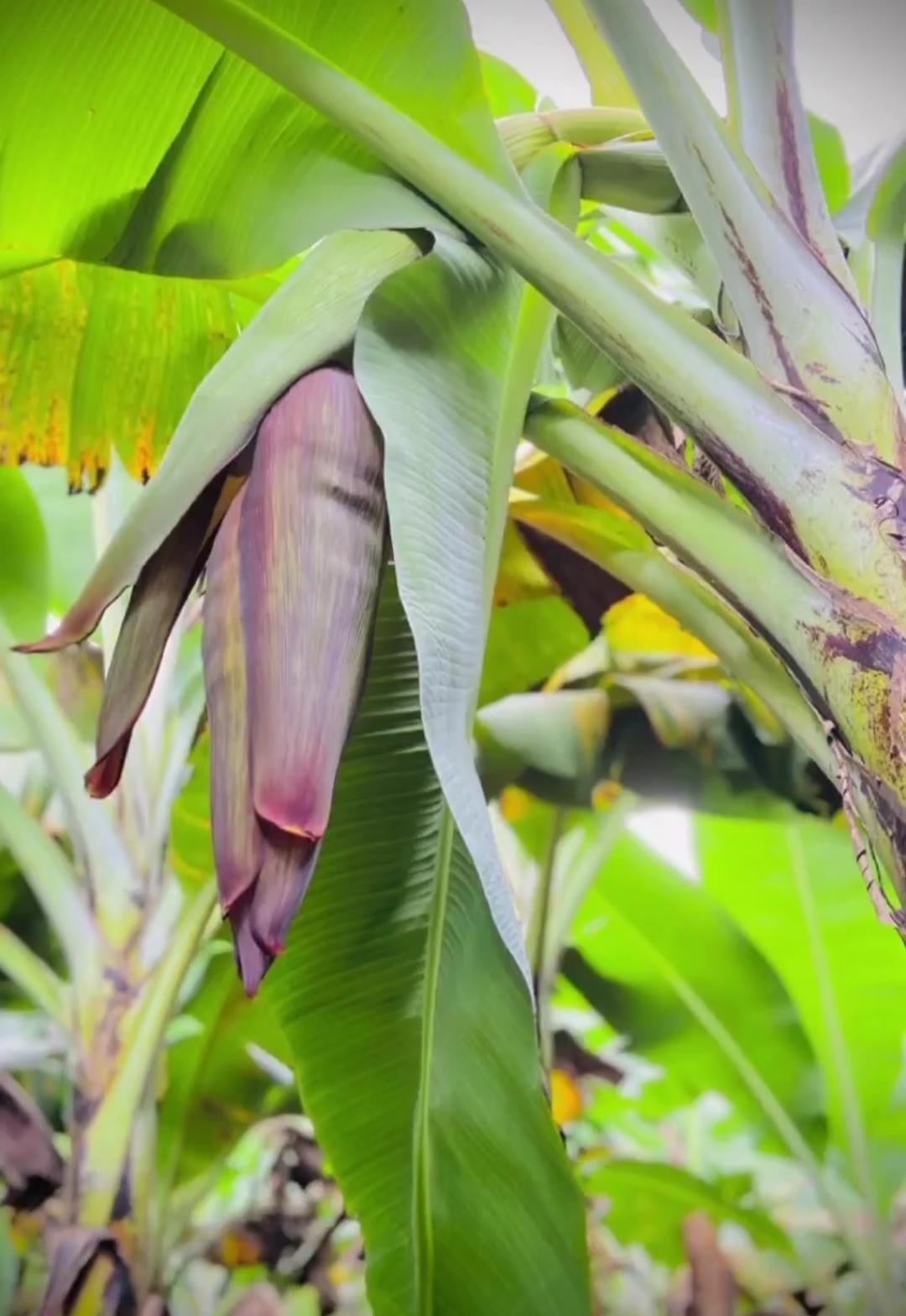
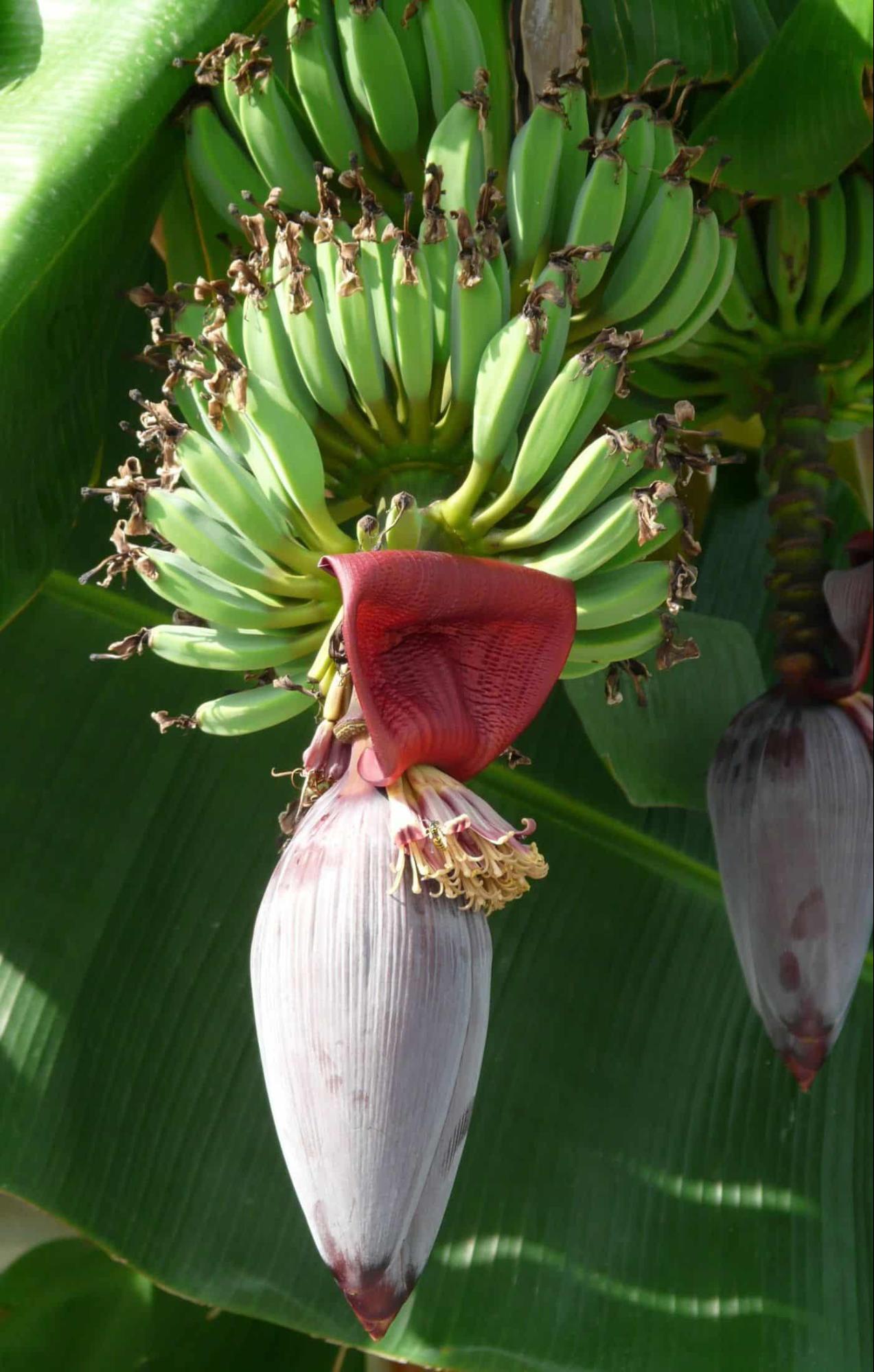
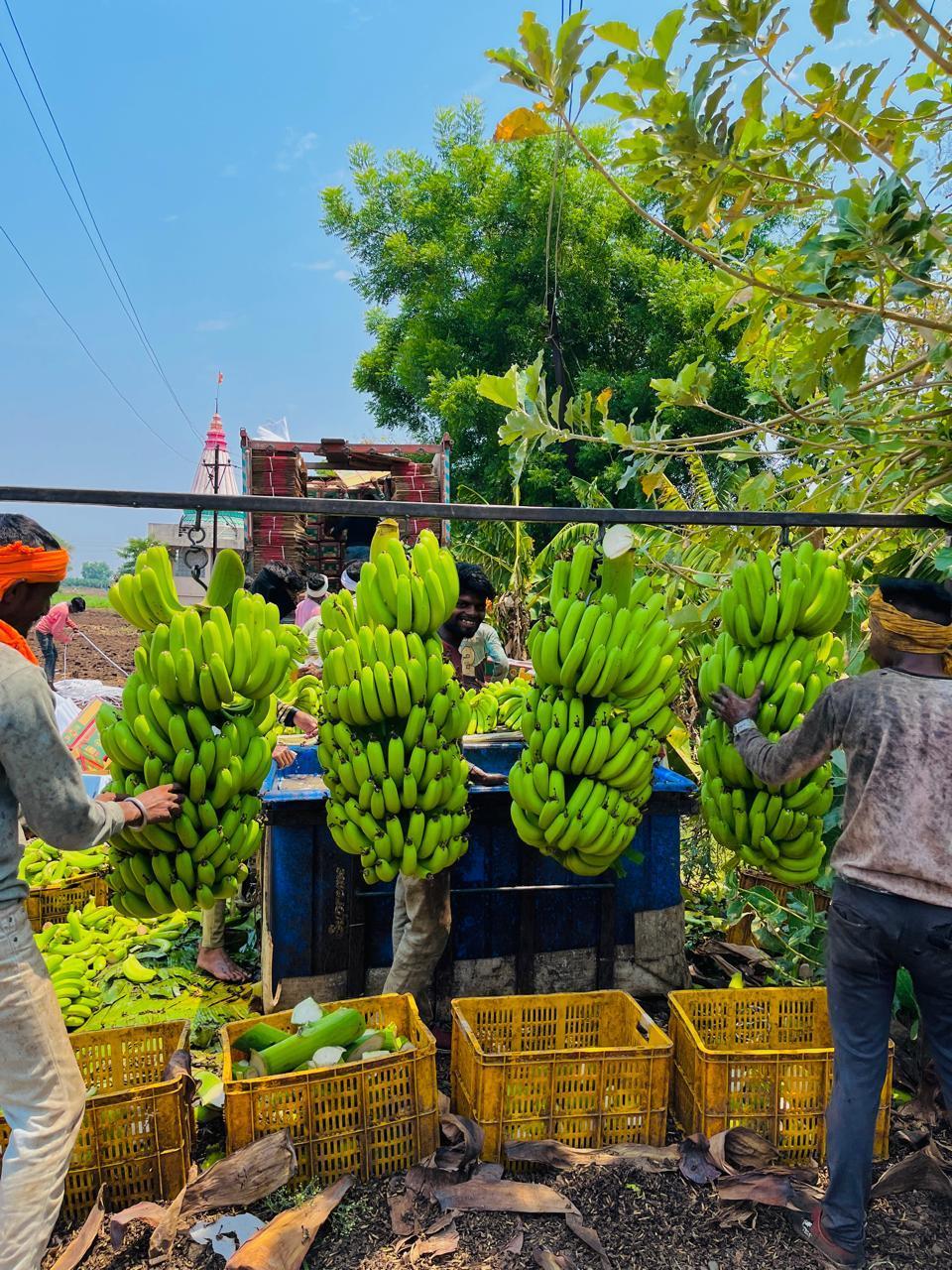
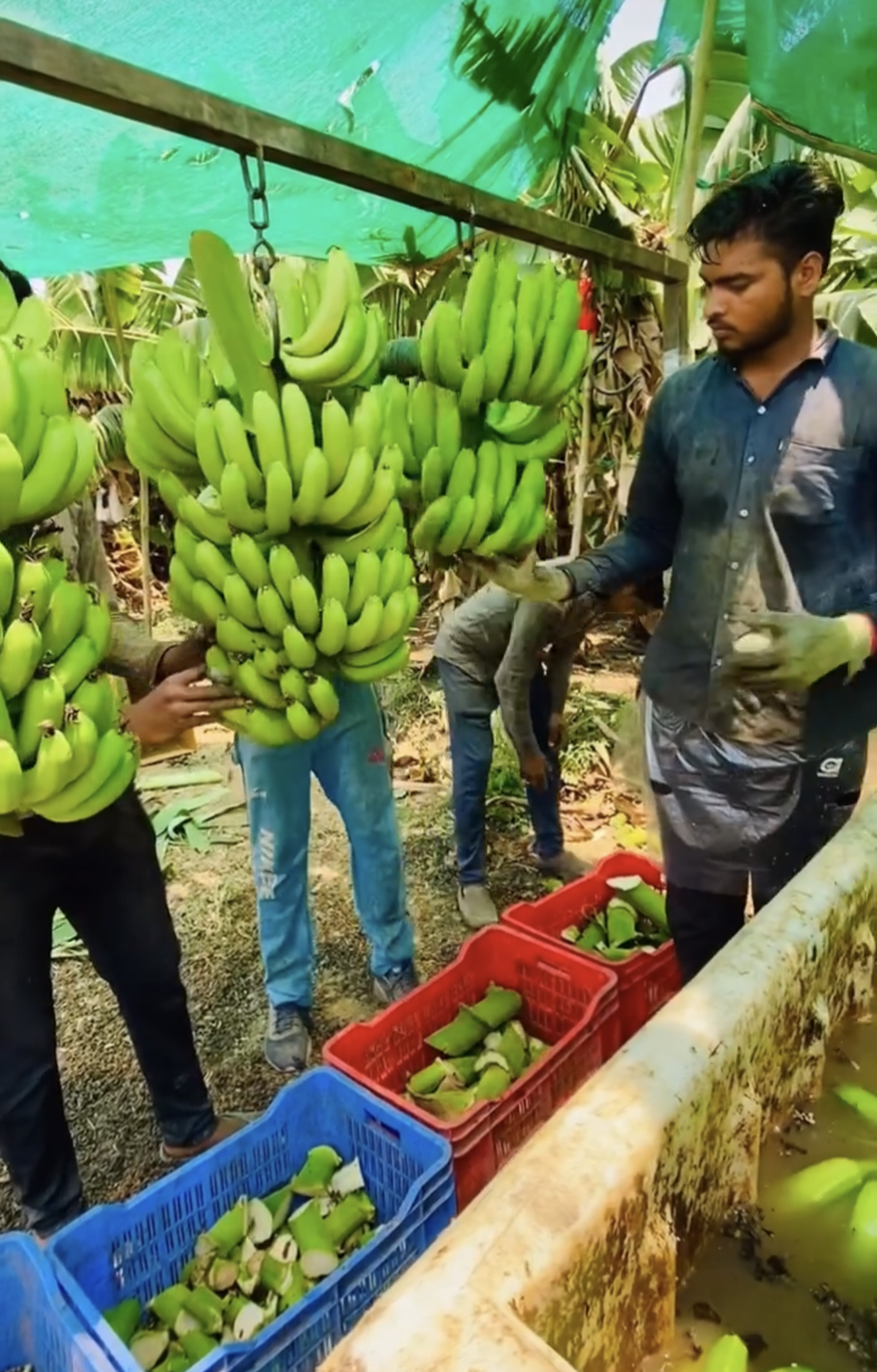

Problems Faced by Banana Cultivators

In the Jalgaon region, known for its extensive banana cultivation, several infrastructure challenges are affecting the efficiency and profitability of the industry. Internal farm roads, especially outside Raver and parts of Yawal Taluka, are in poor condition, making it difficult to harvest bananas directly from the farms, particularly during the rainy season. To improve post-harvest handling, small clusters of 5-6 villages should have pack houses, and each taluka requires 2-3 large cold storage facilities with a capacity of 1,500-2,000 tons. Additionally, establishing a dry port in Jalgaon would help reduce container freight charges, significantly benefiting banana exporters. While Bhusawal has a container loading facility, it is currently not operational. Reviving this facility, especially for refrigerated containers transported by train, would reduce costs for exporters and improve the quality of bananas during transit by ensuring better handling and reduced spoilage.
Government assistance for banana care is crucial to boosting exports from Jalgaon, as it would improve fruit quality and open up opportunities to export to new countries. Additionally, there is a need to raise awareness among farmers about the export process, helping them become more familiar and comfortable with exporting their produce. Currently, most of Jalgaon's banana trade is focused on the domestic market, and many farmers are hesitant to venture into exports. By educating them on the benefits and procedures of exporting, more farmers can participate, ultimately increasing the region's export potential.
Traditional Agricultural Practices
Agricultural practices have changed over time, and the type of crops that have been produced has also changed considerably. Crops such as Safflowers are no longer cultivated, while the cultivation of Bananas, Turmeric, etc, has also changed with time.
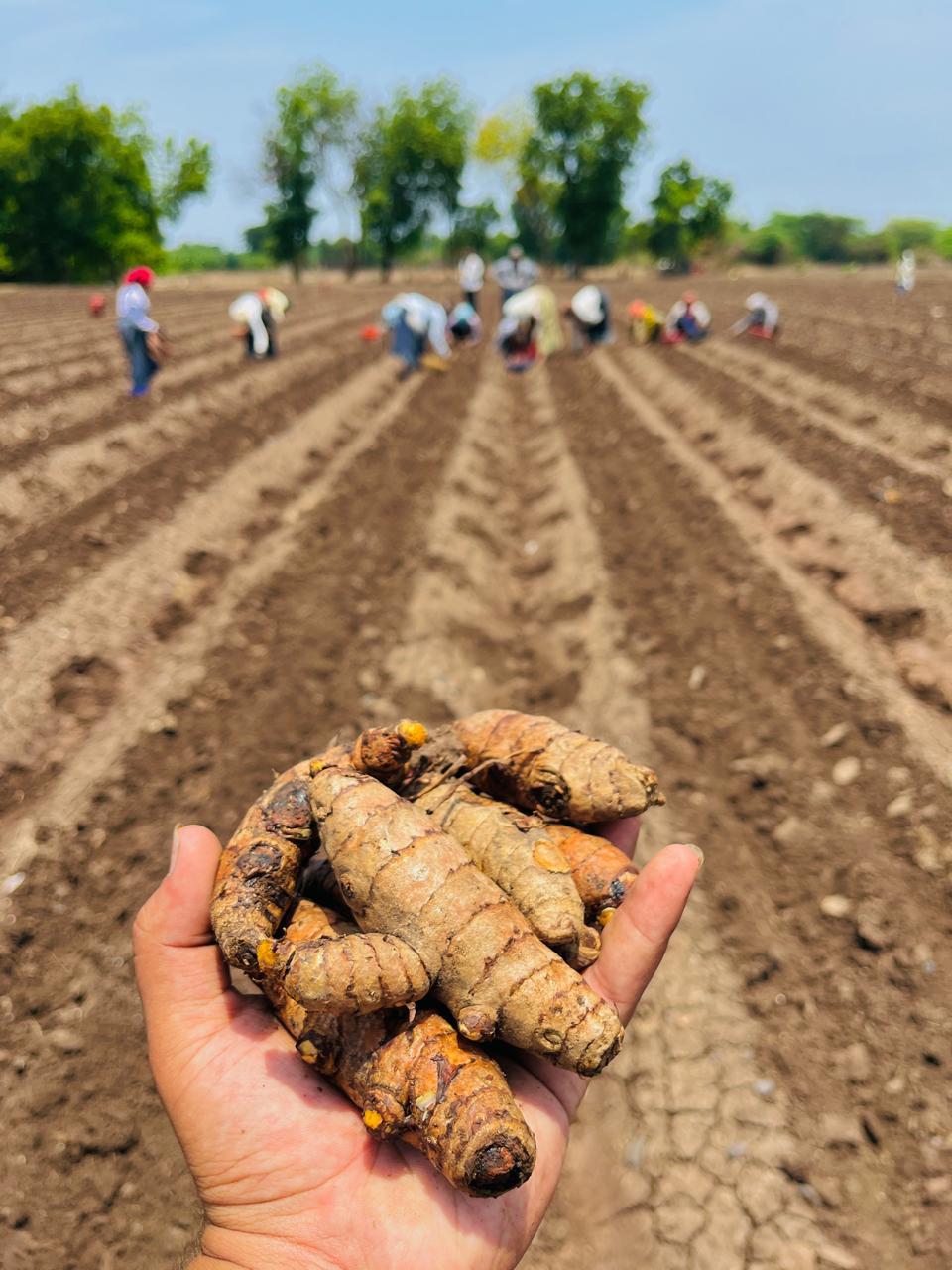
Use of Technology
Farmers have begun using modern technology, such as small tractors, to ease their workload. However, many still prefer using traditional tools and methods due to the high cost of petrol for tractors. In some cases, ancestral methods are maintained for subsistence farming, and bullock carts are still widely used.
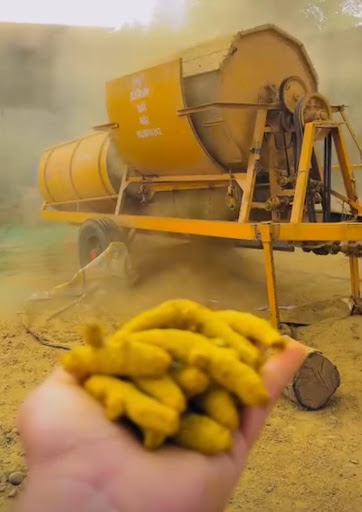
Polyhouses
A polyhouse is a structure made of translucent material that allows plants to grow in a controlled environment. This protects the crops and allows the farmer to control the conditions and grow crops year-round. A few farmers in Jalgaon have started using these Polyhouses for Banana Cultivation.

Drip irrigation
Traditionally, banana plantations in Jalgaon relied on flood irrigation. This method could supply water to a maximum of about 10,000 plants at a time, even with a continuous electric supply and a 15 HP motor pump. Over time, irrigation practices for horticultural crops like bananas have shifted towards more efficient methods. Drip irrigation was introduced in the district in 1989 and has since largely replaced traditional flood irrigation.
This shift has had a significant impact on productivity. According to local figures, banana production increased nearly threefold after the introduction of drip systems, from about 12 lakh tonnes to around 34 lakh tonnes.
Infrastructure Developments
According to the NABARD’s Potential Linked Credit Plan (2023-24) report, Jalgaon has an average developed agricultural infrastructure, including 12 Agricultural Produce Market Committees (APMCs), 502 godowns, 18 cold storage facilities, 9 soil testing centres, 44 plantation nurseries, 380 farmers' clubs, and approximately 8300 fertiliser, seed, and pesticide outlets. Additionally, there are two Krishi Vigyan Kendras (KVKs) supporting agricultural extension services in the region.
Market Structure: APMCs
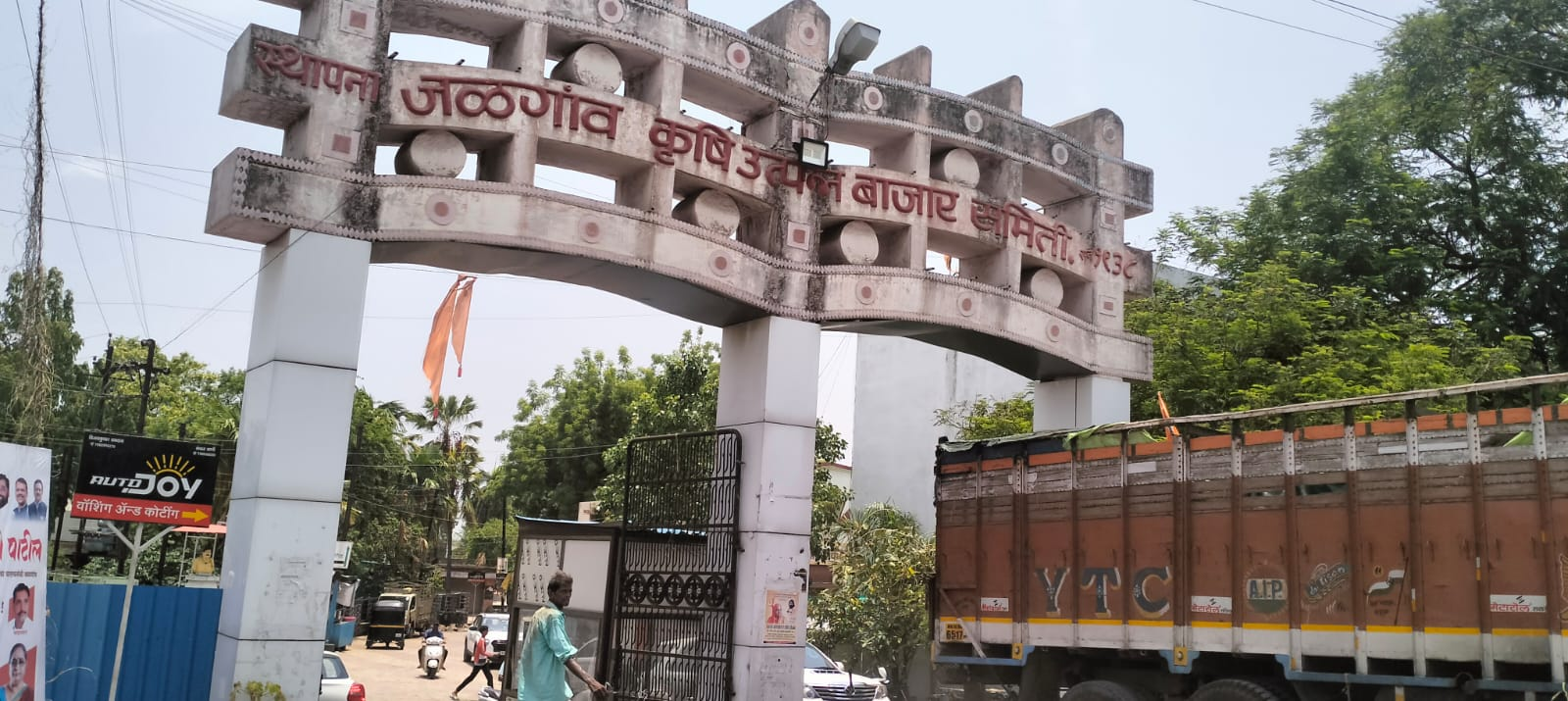
In the Jalgaon district, there is a primary APMC market known as the KUBS Market, located in the city of Jalgaon. While this market provides farmers a space to sell their produce, access is limited, and those in more remote areas may not benefit as much from its services. The effectiveness of the APMC and farmers' experiences with it can vary based on their proximity to the city and market regulations.
List of APMC markets(as of September 2024)
|
Sr. No |
Name |
Est. Year |
Chairman |
No. of Godowns |
|
1. |
Amalner |
1934 |
Uday Bhikanrao Wagh |
11 |
|
2. |
Bhusaval |
1956 |
Sopan Baliram Bharambe |
NA |
|
3. |
Bodwal |
1941 |
Niwrutti Bhika Patil |
1 |
|
4. |
Chalisgaon |
1945 |
Dinesh Sahebrao Patil |
9 |
|
5. |
Chopda |
1948 |
Narendra Vasantrao Patil |
29 |
|
6. |
Dharangaon |
1961 |
Latabai Gajanan Patil |
14 |
|
7. |
Jalgaon |
1938 |
Shamkant Baliram Sonawane |
NA |
|
8. |
Jamner |
1959 |
Rajmal Namdeo Bhagwat |
13 |
|
9. |
Pachora |
1944 |
Ganesh Bhimrao Patil |
5 |
|
10. |
Parola |
1963 |
Satishrao Patil |
2 |
|
11. |
Raver |
1958 |
Pitambar Rambhau Patil |
1 |
|
12. |
Yawal |
1960 |
Bhanudas Chopade |
6 |
Farmers Issues
Farmers in Jalgaon face a range of challenges, including excess rainfall, water shortages, and erratic rain patterns, which disrupt crop cycles and affect yields. Fluctuating prices and labour shortages add to their difficulties, while limited technology transfer and inadequate marketing further hinder agricultural productivity. Poor post-harvest processing, pest and disease control issues, and declining soil fertility due to excessive pesticide use also impact crop health. Additionally, high production levels in certain crops are restricted by insufficient storage facilities. Heatwaves exacerbate these challenges, causing crop stress, soil moisture depletion, and drought conditions, which increase water demand and damage crop health and quality. This leads to higher production costs, reduced yields, and declining farm income, putting further strain on the economic stability of farmers.
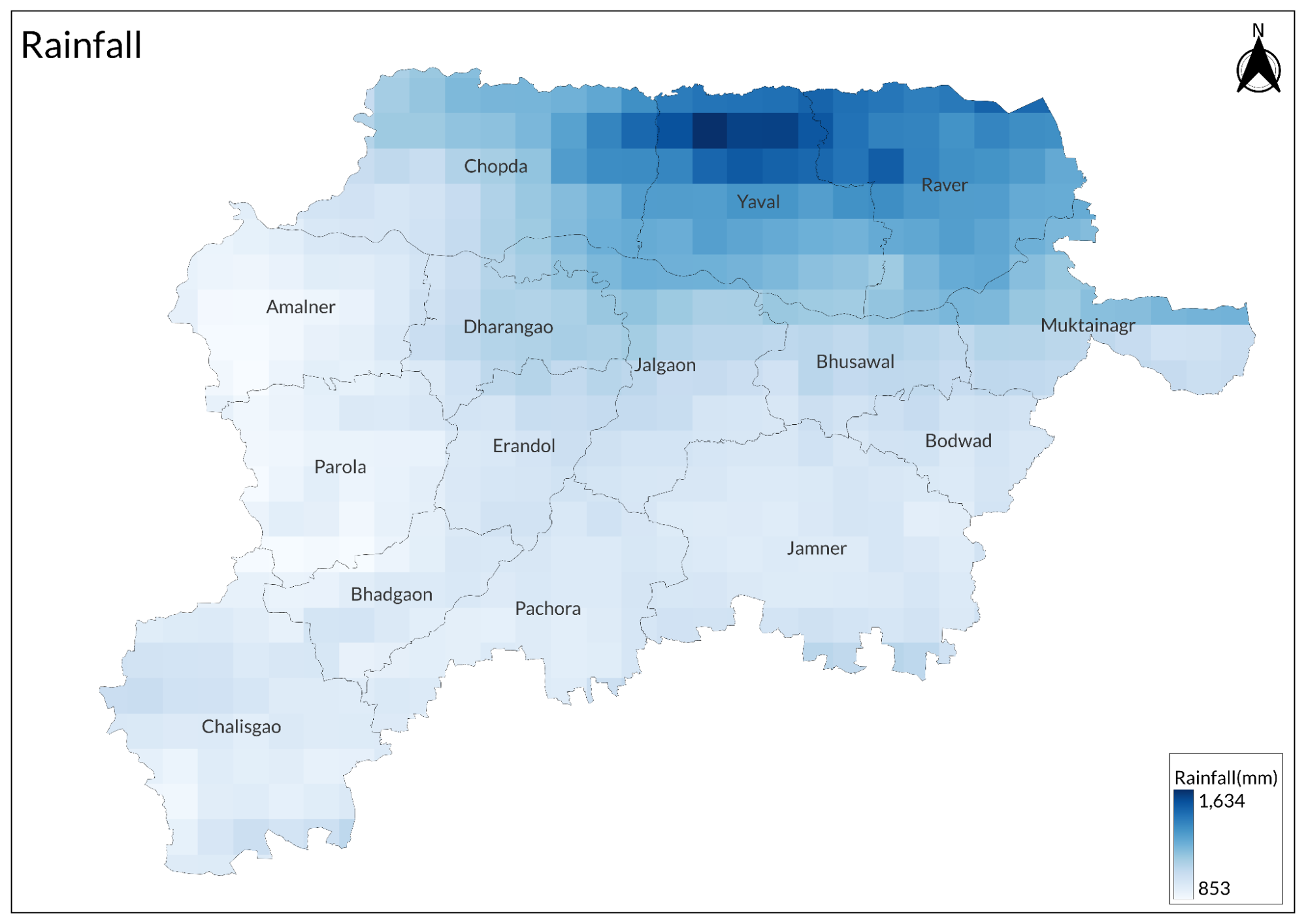
Public awareness of government schemes
Public awareness of government schemes varies greatly across villages in Jalgaon. This difference often depends on the Gram Panchayat's initiative and their willingness to introduce and promote these schemes in their respective villages. While some villages embrace nearly all available schemes, others do not prioritise them.
Graphs
Land Use and Credit
References
Abhijit Salunkhe. 2023. A Study of Problems Faced by Banana Farmers in Jalgaon District. Vol. 13,no. 6.International Journal of Research in Engineering, IT and Social Sciences.https://www.indusedu.org/pdfs/IJREISS/IJREIS…
About Mahapanan. Maharashtra Governmenthttps://mahapanan.maharashtra.gov.in/1052/10…
ICAR. Maharashtra. Agriculture Contingency Plan for District: JALGAON. ICAR - CRIDA - NICRA.https://www.icar-crida.res.in/CP/Maharastra/…
Jalgaon.gov.in. Geographical Information.https://jalgaon.gov.in/about-district/#:~:te…
Krishi Jagran. 2021. How Jalgaon, 'Banana City of India,' Became 7th Biggest Banana Producer in World. Krishi Jagran.https://krishijagran.com/agriculture-world/h…
Maharashtra Tourism. Nag Panchami. Maharashtra Tourism.https://utsav.gov.in/view-event/bendur-pola
Ministry of Tourism, Government of India. n.d.Bendur / Pola. Utsav.gov.in.https://maharashtratourism.net/festivals/nag…
N. Madhavan. 2012. Innovation in Agriculture: Precision Farming. Business Today.https://www.businesstoday.in/magazine/specia…
NABARD. 2023-24. Potential Linked Credit Plan: Jalgaon. Maharashtra Regional Office, Punehttps://www.nabard.org/auth/writereaddata/te…
Sinha, Vivek. 2018. How Jalgaon, 'The Banana City of India,' Is Fast Becoming the 'Banana Republic'. The Financial Express.https://www.financialexpress.com/india-news/…
Last updated on 6 November 2025. Help us improve the information on this page by clicking on suggest edits or writing to us.